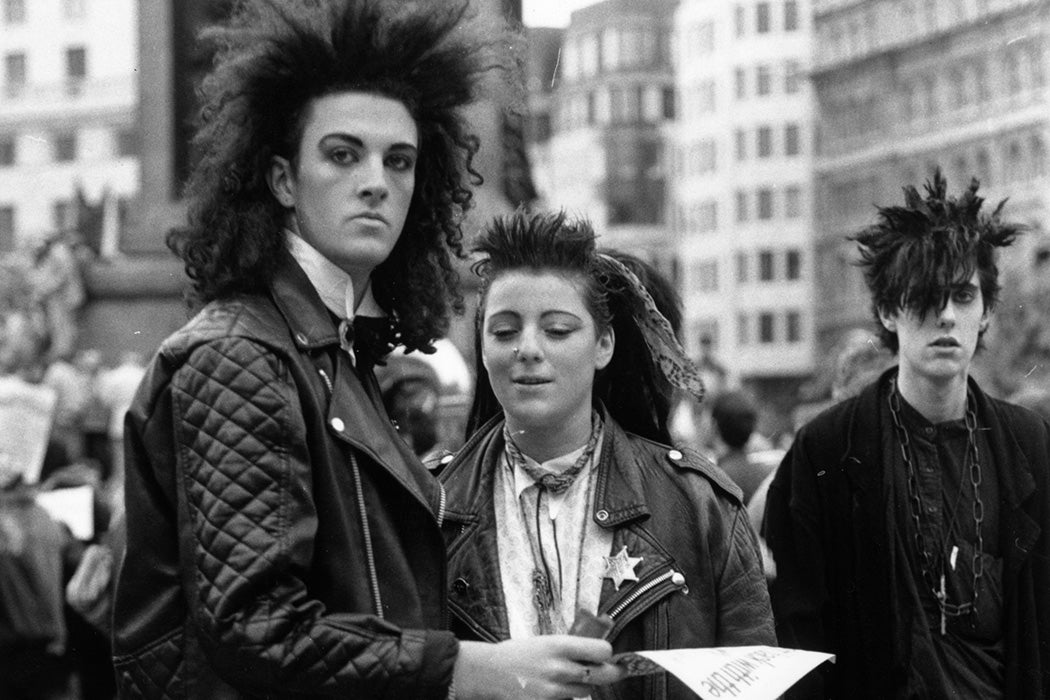“What, are you going to a funeral?” ask the parents and peers of Goth kids, dressed in black with a white-makeup-enhanced pallor, drinking espresso at the restored cafe—because who would be caught (un)dead at a Starbucks?
Despite nostalgia for the Twilight Saga, Goths seem rarer today than they were in the 1980s and ‘90s. Nonetheless, scholars have documented the beginnings of their culture and its distinctive music inside the decay of punk rock’s anarchistic, sometimes nihilistic war against convention in the U.K. On January 26, 1979, the band Bauhaus recorded a nine-and-a-half-minute dirge, “Bela Lugosi’s Dead,” which most Goths and critics alike say influenced the development of the entire rest of the genre.
The lyrics of the song describe a world of the undead, including black capes, bats and a bell tower, plus vampire dances and a vampire funeral: “Bereft in deathly bloom / Alone in a darkened room / The count.” (Bela Lugosi, of course, was the Hungarian-American actor who played Dracula in Tod Browning’s movie version of the story. And Bauhaus’s lead singer, Peter Murphy, had a notable turn as, well, a vampire in, well, the Twilight series.)
Performance studies scholar Tricia Henry Young examines Goth as a subculture with its own styles, media, even jokes. The music’s brooding fascination with death, beauty, gender play, and transgressive sexuality spawned a scene whose fans described themselves as “dramatic and pretentious.” British Goths in the 1980s showed off their Nosferatu-reminiscent looks at London’s legendary Batcave club. Signature moves of classic Goths, writes Young,
bring to mind images of Frankenstein awakening, condemned prisoners being electrocuted, or victims of electroshock treatment. Alternately limp and rigidly erect, they [dancers] jerk their torsos and limbs as if convulsed with high voltage. Other dancers suggest guillotine victims, their hair cut severely short in back and flopping over in front (so as to insure a quick, clean slice.)
Why such dark themes? Young says that Goth’s headstone chic comes from an “estrangement from mainstream culture,” which comes through in its adherents’ “deliberate dissociation from ‘normal’ everyday behaviour.” Like several other examples of the various Gothic artistic movements that emerged starting in the late eighteenth century, the post-punk Goth scene delights in “a longing to escape” the mainstream “through a cultivated nostalgia for other eras and places.” So just as Gothic poets and novelists like Samuel Taylor Coleridge and Mary Shelley wrote about sundry castles and night-shaded forests from hundreds of years before they were born, Goth kids “cultivat[e] nostalgia for other eras and places,” including medieval Europe.
Weekly Newsletter
To Young, it’s not a surprise that the goth subculture emerged when and where it did: in the U.K., in the early years of Margaret Thatcher’s long-running Conservative Party government, soon matched in the U.S. with the ascendance of Ronald Reagan and the Republicans. The 1970s–80s moral conservatism, panic over HIV/AIDS, and “ambivalence” toward technology led to a “pronounced anxiety, self questioning and insecurity about the future,” which Goth perfectly encapsulated. Those unsettling qualities also characterized the panic in England after the French Revolution, when Gothic literature was born.
Vampires may come and vampires may go, but young people will always brood and try to piss off their parents. And Bela Lugosi will always be dead for them.







